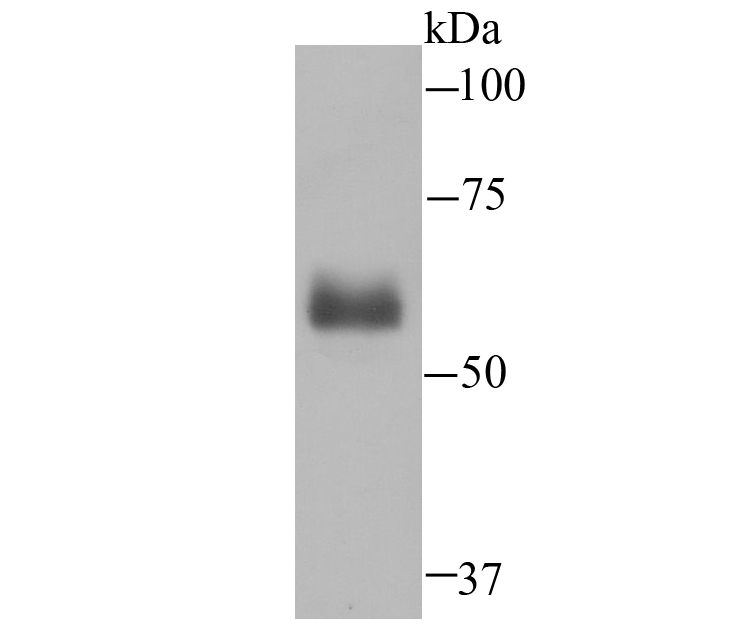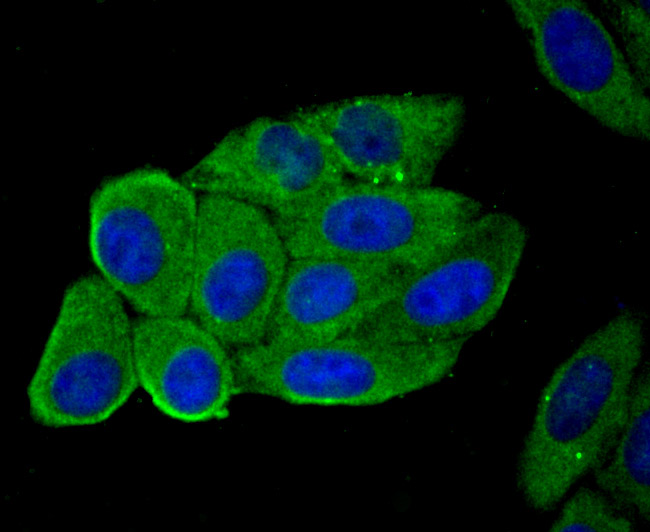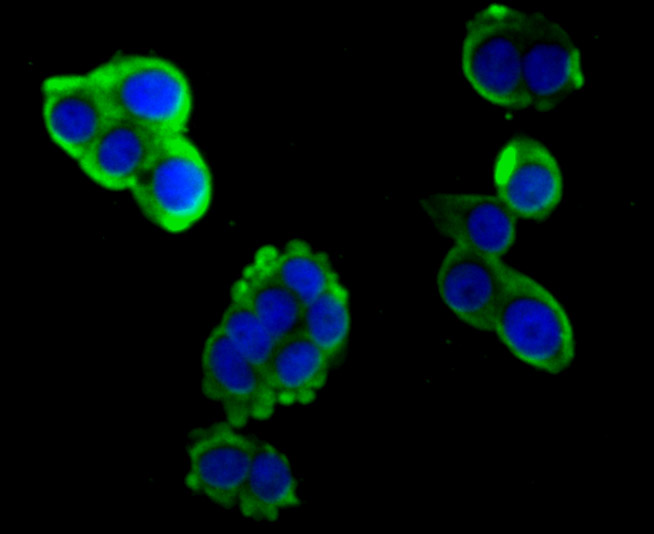Product Detail
Product NameHemopexin Rabbit mAb
Clone No.JU83-33
Host SpeciesRecombinant Rabbit
Clonality Monoclonal
PurificationProA affinity purified
ApplicationsWB,ICC/IF,IHC,IP
Species ReactivityHu
Immunogen DescRecombinant protein
ConjugateUnconjugated
Other NamesBeta 1B glycoprotein antibody
Beta-1B-glycoprotein antibody
FLJ56652 antibody
HEMO antibody
HEMO_HUMAN antibody
Hemopexin antibody
Hpx antibody
HX antibody
Accession NoSwiss-Prot#:P02790
Uniprot
P02790
Gene ID
3263;
Calculated MW52 kDa
Formulation1*TBS (pH7.4), 1%BSA, 40%Glycerol. Preservative: 0.05% Sodium Azide.
StorageStore at -20˚C
Application Details
WB: 1:500-1:2,000
IHC: 1:100-1:500
ICC: 1:50-1:200
IP: 1:10-1:50
Western blot analysis of Hemopexin on human plasma lysate using anti-Hemopexin antibody at 1/500 dilution.
Immunohistochemical analysis of paraffin-embedded human liver tissue using anti-Hemopexin antibody. Counter stained with hematoxylin.
Immunohistochemical analysis of paraffin-embedded human placenta tissue using anti-Hemopexin antibody. Counter stained with hematoxylin.
ICC staining Hemopexin in HepG2 cells (green). The nuclear counter stain is DAPI (blue). Cells were fixed in paraformaldehyde, permeabilised with 0.25% Triton X100/PBS.
ICC staining Hemopexin in LO2 cells (green). The nuclear counter stain is DAPI (blue). Cells were fixed in paraformaldehyde, permeabilised with 0.25% Triton X100/PBS.
ICC staining Hemopexin in LOVO cells (green). The nuclear counter stain is DAPI (blue). Cells were fixed in paraformaldehyde, permeabilised with 0.25% Triton X100/PBS.
ICC staining Hemopexin in SK-Br-3 cells (green). The nuclear counter stain is DAPI (blue). Cells were fixed in paraformaldehyde, permeabilised with 0.25% Triton X100/PBS.
Hemopexin (also known as β 1B glycoprotein or HPX), a 462 amino acid protein, functions as a scavenger and transporter of toxic plasma heme, transporting heme to the liver for breakdown and iron recovery. Hemopexin cooperates with Albumin, Haptoglobin, and high and low density lipoproteins to trap toxic plasma heme, which occurs as the result of the degradation of hemoglobin, myoglobin and enzymes with heme prosthetic groups, and to ensure the clearance of toxic heme from the plasma. After releasing the heme molecule, the free Hemopexin returns to circulation. It is expressed by the liver and is secreted in plasma. Hemopexin may play a role in the maintenance of metal ion homeostasis. It binds the following metal ions in order of highest to lowest affinity: nickel, copper, cobalt, zinc and manganese. Hemopexin can also act as a toxic protease that leads to proteinuria and glomerular alterations, which are characteristics of minimal changes disease (MCD), a common cause of nephrotic syndrome.
If you have published an article using product 49698, please notify us so that we can cite your literature.









 Yes
Yes



